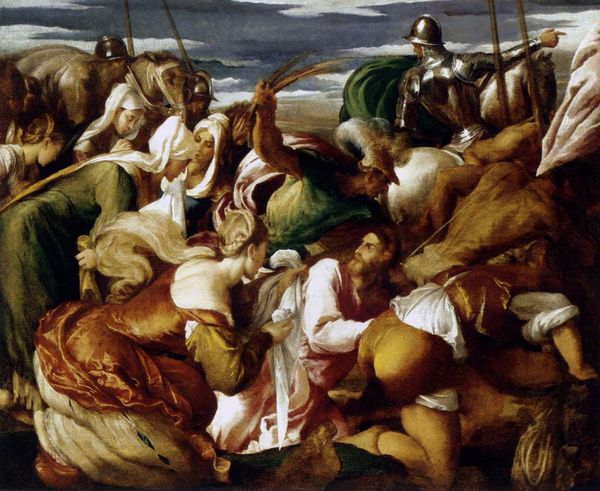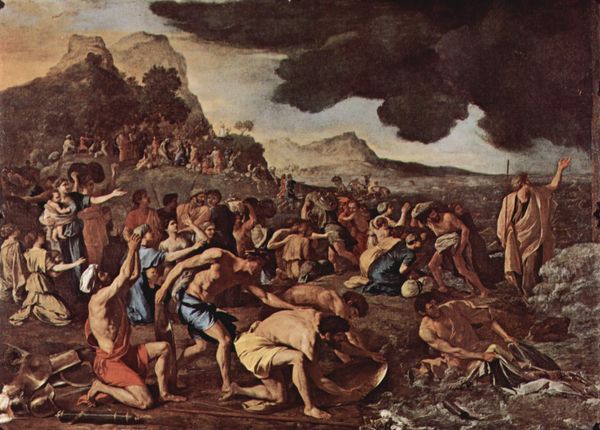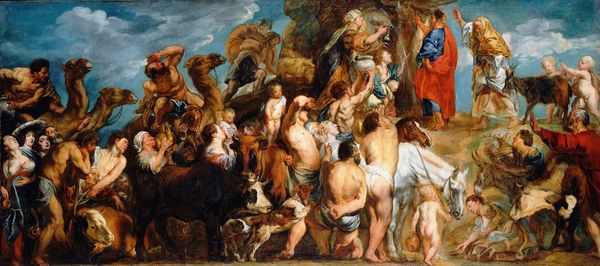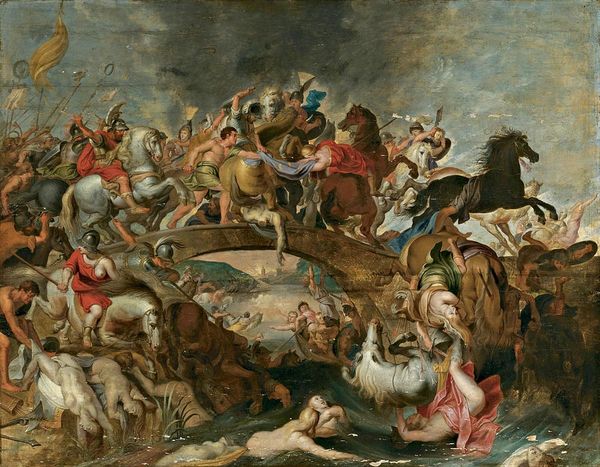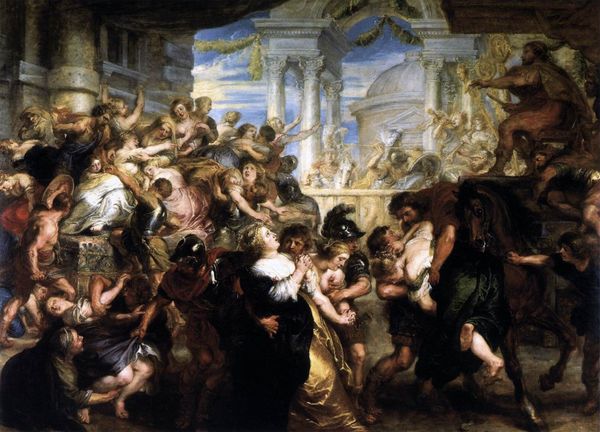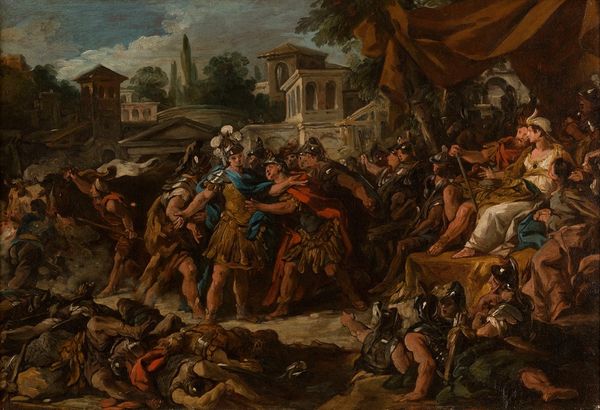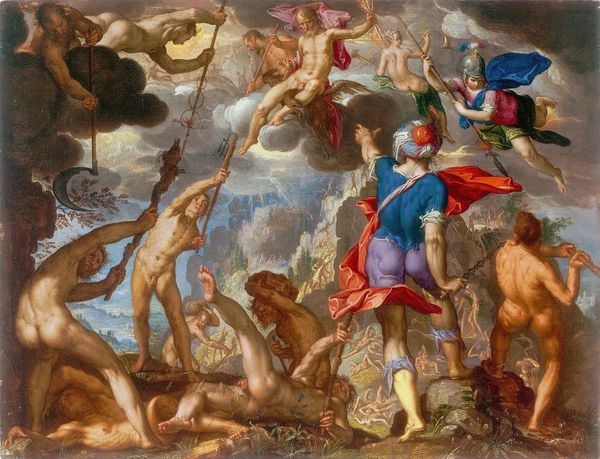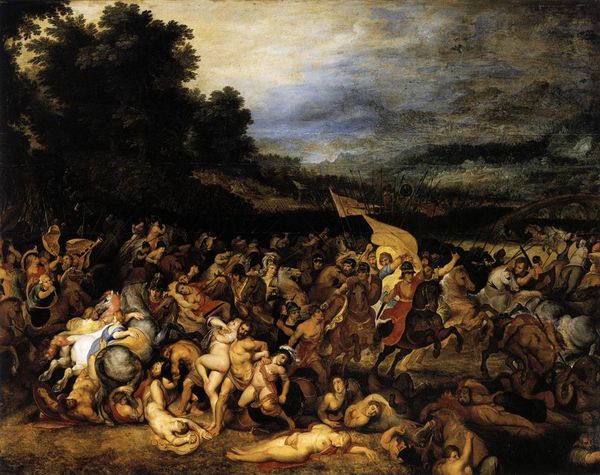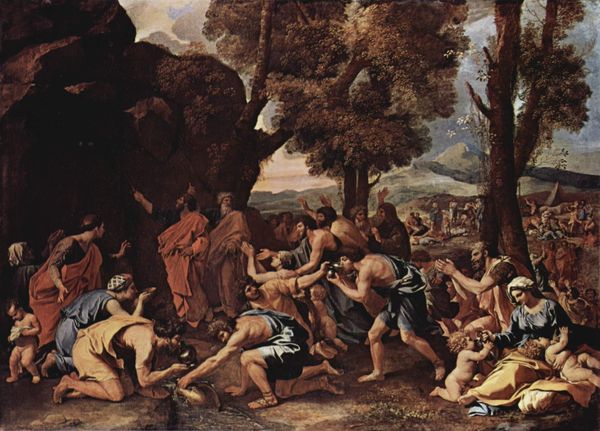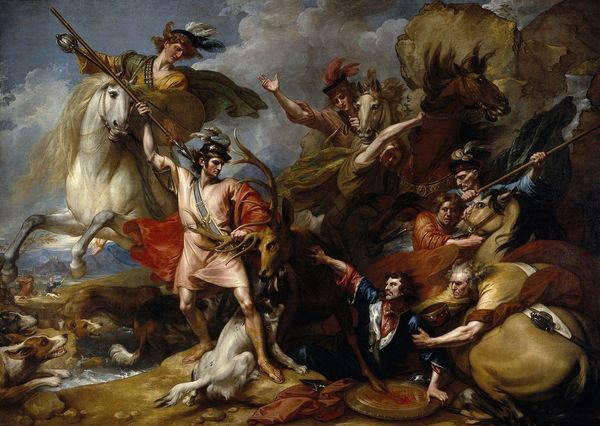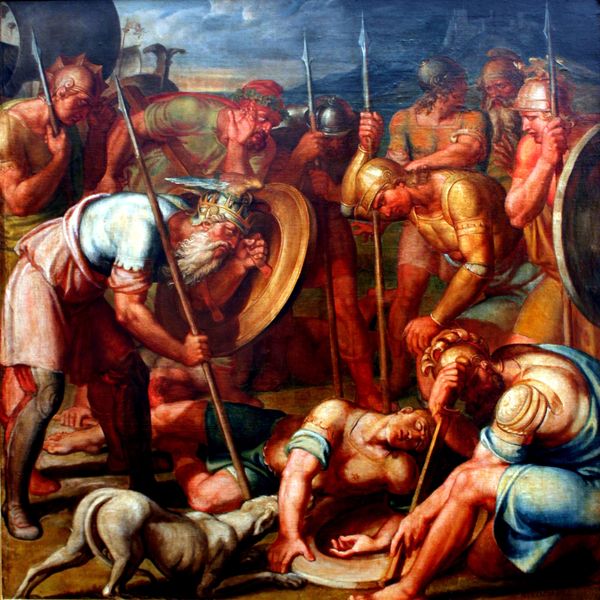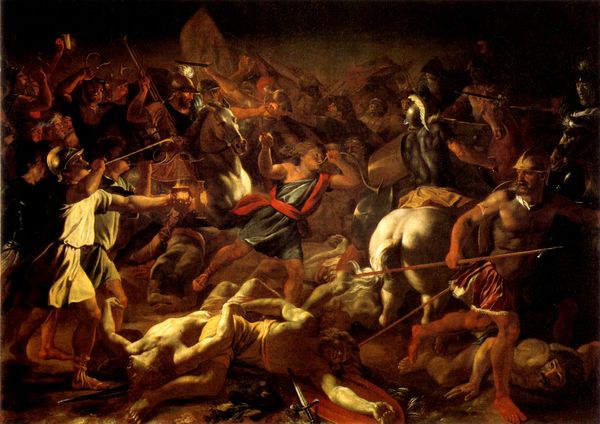
painting, oil-paint
#
narrative-art
#
baroque
#
painting
#
oil-paint
#
landscape
#
figuration
#
oil painting
#
history-painting
#
academic-art
#
italian-renaissance
Copyright: Public Domain: Artvee
Curator: Welcome. Today we are exploring a captivating tableau rendered in oil on canvas. This is “The Victory of Joshua over the Amalekites”, painted by Nicolas Poussin. Editor: Wow, what a maelstrom. My first impression is just total chaos. A roiling mass of bodies and horses, all locked in some kind of brutal ballet. Does victory always look this messy? Curator: The painting effectively utilizes diagonals to convey movement and disorder, befitting the subject matter. Note how the figures are carefully arranged within the landscape to guide the viewer’s eye through the complex scene. Poussin organizes the battle into distinct foreground and background planes, lending depth. Editor: Yeah, there’s a definite sense of layers, like peeling back the story. Up front, it's all limbs and grimaces. Then you see riders looming over the fray, flags waving like angry eyebrows. I love the way the light catches on the shields, tiny mirrors reflecting the violence. But, I can’t help but feel a bit overwhelmed looking at all of the men dying and horses going to ground. Curator: The subject matter is drawn from the Old Testament Book of Exodus, where Moses directs Joshua to fight the Amalekites. We can see Moses, typically, atop the mountain with arms raised to the heavens. The narrative speaks to divine intervention playing a key role in mortal affairs. Editor: Divine intervention feels a bit… remote, up there on the mountain. But I find that a good reminder for our own place and position while contemplating a historic event. So many arms are raised up here – maybe it's all intervention in the end. Curator: Indeed. And, look how Poussin uses a limited palette. Earth tones and reds are deployed to underscore the brutality, perhaps, and sacrifice involved. Editor: All of the colors mix together. A muddy brown color palette helps to tie all of these characters, factions, and historical narratives together into a really great composition and visualization. Despite being a historical picture, you really are put right there into the landscape of this story! I think you start to lose some understanding of reality and place! What is heaven and what is earth, in the context of such violent clashes? Curator: That blurring you describe underscores Poussin’s intent, reflecting the blurred lines of morality within warfare itself. And so a contemplation of this sort prompts, naturally, one to consider the true costs and legacies of such conflicts throughout time. Editor: Precisely. All in all, not so much a celebration as a stark, considered, meditation on violence.
Comments
No comments
Be the first to comment and join the conversation on the ultimate creative platform.
